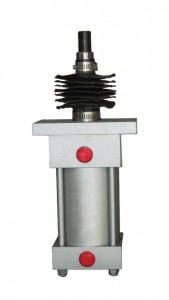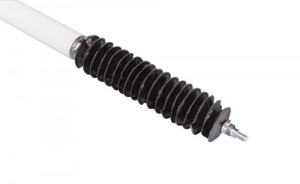
Today’s fluid-power users, for the most part, are well aware that keeping hydraulic fluid clean is essential in preventing premature failures and unexpected downtime. Nonetheless, contamination remains a major cause of hydraulic-cylinder failure, particularly because it leads to seal failure and leaks. And it can come from several different and unexpected sources.
Internal contamination is one obvious source. Particulate contaminants include dirt, wear particles from pumps and valves, and debris from internal breakdown of hoses. Contributing factors include clogged filters and dirty assembly areas.
Such contamination results in scored rods and cylinder-bore surfaces and excessive seal wear. This causes leaks past the cylinder rod and head and into the environment. And it can increase internal leakage past the piston seals, which reduces efficiency. It can even exacerbate erosion problems, where contaminants abrade the seal as media travels from the high-pressure to low-pressure side of the seal.
Damaged cylinder rods and bores can usually be repaired, but users should first determine the root cause or the problem will soon return. Proper filtration keeps fluid clean and helps prevent problems due to internal contamination.
Also ensure proper flow through the cylinder. If the volume of oil in a cylinder exceeds that of the hose between the cylinder and directional valve, it may not flow efficiently to the reservoir for filtration. Instead, particulates remain in the cylinder and attack the seals. Here, a fix is to mount the valve closer to the cylinder to ensure efficient circulation. Proper installation and alignment of the cylinder will also reduce the rate at which the cylinder itself generates fluid contaminants, by minimizing seal and bearing wear.
External contaminants are another consideration. Hydraulic cylinders are constantly exposed to external contaminants ranging from dust, mud and abrasive grit to metal chips and weld spatter. Fluid contaminants include coolants, washdown water and rain. Dirt and fluid contaminants can be drawn into a cylinder during rod retraction via a faulty wiper seal, so the proper specification and installation of a rod wiper/scraper is recommended. Likewise, a well-designed tank breather/filter keeps water and dirt out the system.
Under particularly dirty conditions, consider installing boots or bellows over the moving rod. A pleated bellows/boot can protect finished rod surfaces from wear-causing elements, reduce downtime and lengthen cylinder life. These protective devices are often made of elastomer-covered fabric, as well as flexible vulcanized and injection-molded materials. The covers can be held in place by collars and hose clamps or flanges.

Water is a common contaminant in petroleum-oil based systems that degrades fluid-performance properties and accelerates oxidation and additive depletion. Exposing some seal materials to water—especially at elevated temperatures—also lowers their physical properties. That translates to seals that lose strength, harden, crack or even disintegrate.
Polyurethane seals, for example, are subject hydrolysis effects in high-water-content fluids at temperatures above 50°C. That leads to loss of hardness and tensile strength, in turn allowing fluid leakage past the rod seal.
Users should ensure that seal materials are compatible with the fluid and system operating temperature. And experts recommend that users minimize water ingression through suitable wipers and desiccant-style breathers. Finally, maintenance technicians should routinely test for the presence of water in the hydraulic fluid. Water-removal filters or dehydrators are recommended to control water content.
Air is often overlooked as a fluid contaminant. Hydraulic fluid always contains some dissolved air that causes no problems. However, if air mixes with the hydraulic fluid and forms bubbles, that’s another story, as it can physically damage the seals. Causes include air drawn past the rod seals; rapid decompression; high flow through an undersized port, generating turbulence; and overrunning loads.
Air bubbles can lead to scoring, nibbling and other physical damage to the seal. Pressure shocks, particularly in cylinders cycling at high speeds, can cause air bubbles to become heated, a condition often referred to as dieseling. The combination of high temperature and high pressure can ignite oil fumes inside the bubble and burn the seal face, and consequently lead to leaks and quick cylinder failure. Minimizing aeration of the fluid through proper design and operation, as mentioned above, is a helpful option.


Great blog. A really good read. For years there has been a demand for a hydraulic cylinder piston that exhibited the long life of cast iron rings, the leak tight sealing of cup seals, and the low friction of Teflon. A piston that would tolerate considerable side loading without galling or scoring the tube; that would permit easy, but infrequent, maintenance, and would be economically feasible. A near perfect piston for virtually any application. A UK company based in Gloucestershire has developed just that. The Slipper Seal Piston on their Hydraulic Cylinders, as standard on their EH Series, meets these requirements to a degree that is astounding. For more technical information visit: http://www.helipebs-controls.co.uk/
I had never thought about how internal or external contamination could lead to premature hydraulic repairs or failure. I’m sure that abrasive materials like grit and metal chips can result in excessive wear on seals and cylinders over time. If I ever get hydraulic equipment, I’ll have to make sure that I keep an eye on cleanliness to prevent contamination. Thanks for the post.
I like how this article right from the beginning stats that having clean fluids will help hydraulic cylinders last longer. I wonder if there is a way to tell how clean it is, or the when to change it. I would imagine that a regular check up would be good too.
Very useful expertize contribution, in future, What do you suggest to be hydraulics fluid power research areas to maximize system efficiency?